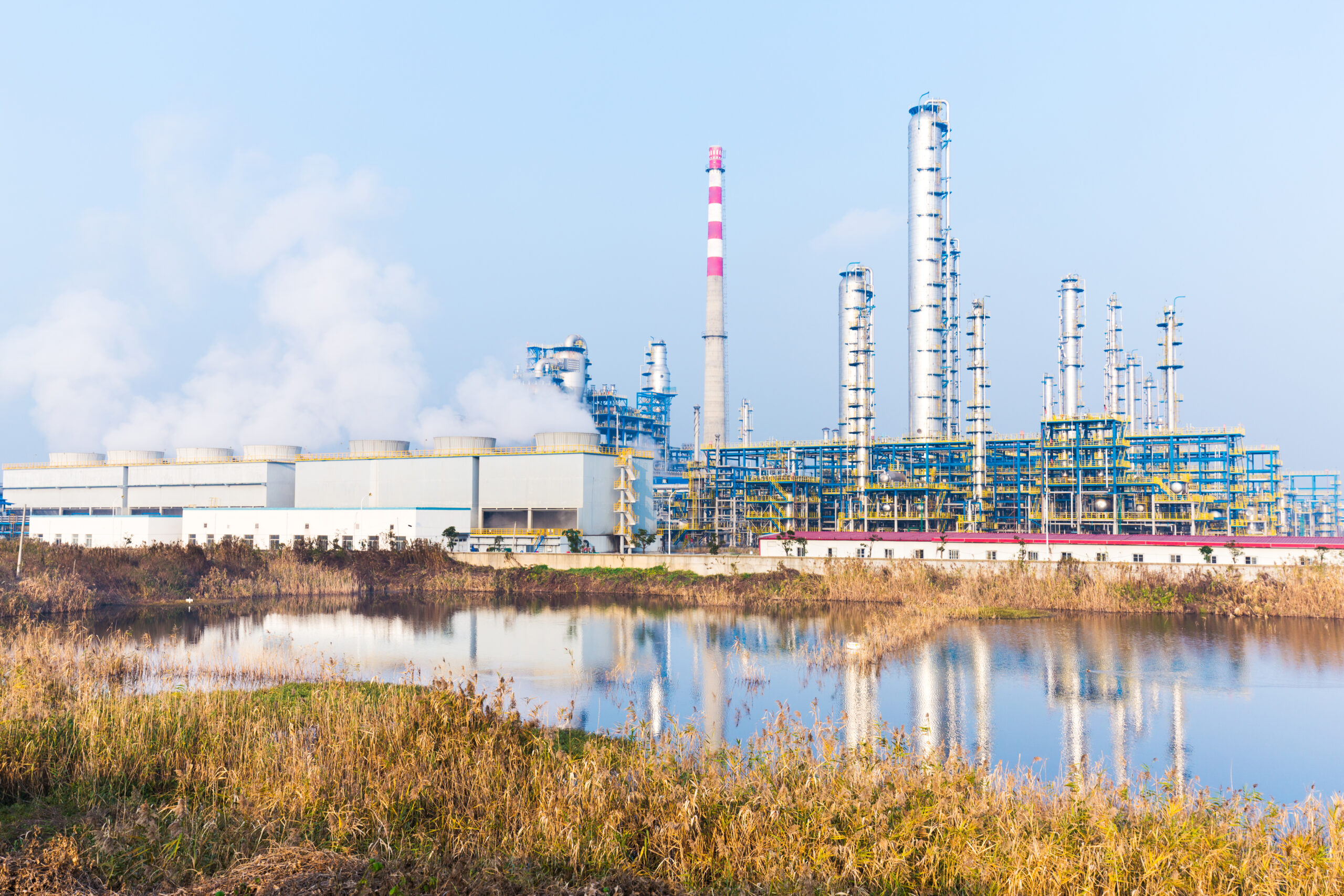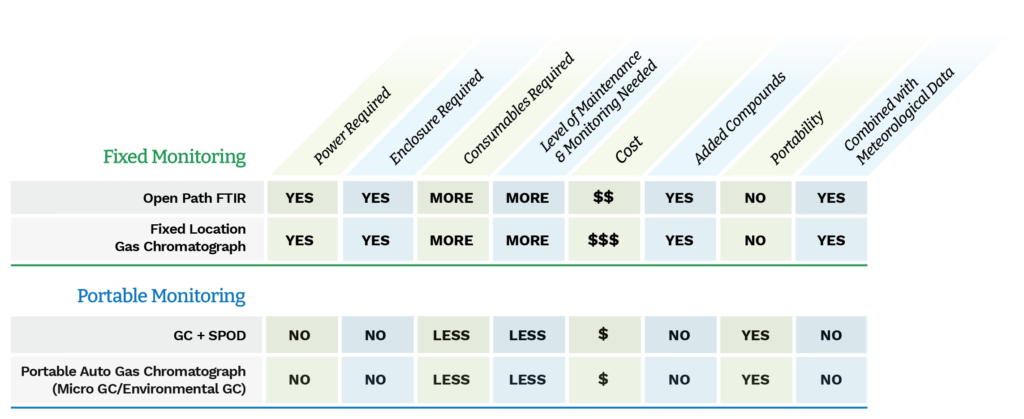
Benzene Monitoring for Your Facility – Finding the Technology and Solution that Best Meets Your Needs
March 14, 2022
By: Jenna Granstra & Dr. Peter Zemek
Since the US EPA approved Method 325 in September 2015, Benzene and VOC monitoring has been top of mind in refineries and other benzene-producing industries. While Method 325 required passive sampling, continuous developments in technologies and methodologies now offer more potential solutions – a critical development as more state and local governments, NGOs and a concerned public are increasingly interested in the impacts of benzene on the environment and public at large.
What do I need to know about monitoring and what are my options?
Due to the many variables in monitoring benzene and other VOCs, there are several monitoring options available to your organization, and several considerations that can potentially impact your monitoring choice. Some of these are:
- Are you monitoring for benzene only, or a combination of VOCs?
- What are the power requirements for your preferred solution, and what is the power status/availability at your site?
- How quickly do you need/want a measurement?
- What are the costs?
- Do you need/prefer a fixed or portable monitoring solution? Most of the answers to the questions above are dependent on this choice.
Fixed or Portable: Pros, Cons and Important Considerations of Each Option
As the name implies, the available monitoring options are fixed location or portable. Both types have distinct benefits and requirements, and both are quite useful and accurate if deployed correctly. Fixed monitoring stations require a power source, an enclosure, more consumables, a computer, instruments, and a dedicated team member to monitor the location frequently.
Portable stations can be run on alternate power (such as solar) have less consumables, and require less maintenance over the project life cycle. These stations can also be moved to the needs of your program.
Fixed Monitoring:
Open Path FTIR
With the robust monitoring technology, Open Path allows for other compounds to be added easily and has a faster response time (paired with meteorological data to help detect sources with more accuracy). This system measures emissions from nearby sources over an extended path located downwind from the source. Open Path is generally the costliest fixed monitoring solution, but offers accurate data with a fast time resolution.
Fixed Location Gas Chromatograph
A gas chromatograph has the capability to sample more compounds making I ta solid option for monitoring. Coupled with high accuracy, low detection limits when compared to alternative monitoring technologies. The main drawback is the number of consumables, and a site operator needs to frequently visit the site, additionally, that spatial coverage may be less if father from the source, making placement important. This method is often used by regulatory agencies.
Portable Monitoring:
Portable Auto Gas Chromatograph (also known as Micro GC or Environmental GC)
If a fixed location monitoring system isn’t a requirement, portable gas chromatography is an excellent solution. With a considerably smaller unit that can be solar powered, using less consumables and general maintenance, and without the need for an on-station operator, this is a great and accurate solution made even better by the ability to relocate it at the needs of your program.
GC + SPOD
If monitoring benzene alone isn’t a requirement, this is a great option, with a total VOC sensor to measure total VOC concentrations in an area (incl. benzene). Tripod-mounted, extremely portable , with a fast sample time – allowing you a faster response time, and less overall time spent in the field waiting for results.

Other Elements:
Montrose AirSense Dashboard
Once the monitoring is done, it’s time to review the data. Montrose has an ambient monitoring dashboard solution that aids in the collection, monitoring and analysis of your samples. And with a rapid turnaround, AirSense can give you a thorough and accurate analysis, allowing you to send out a leak detection team with an optical camera to pinpoint a leak – resulting in a quicker response time toward repairs, and less time spent in the field searching for leaks.
How Can I Take my Benzene and VOC Monitoring to the Next Level?
With decades of experience in fenceline and fugitive emissions monitoring, program development and repair, Montrose Environmental Group has the experience and the technology needed to assist your organization.
For more information, please contact us or learn about our capabilities.
 Meet our Experts
Meet our Experts
Jenna Granstra
Client Project Manager
Ms. Granstra is a Project Manager in the Ambient/ Fenceline group at Montrose Air Quality Services in Austin, Texas. She has over eight years of experience in ambient air monitoring, fenceline monitoring, data analysis and quality assurance. Jenna is a graduate of the University of British Columbia with a Masters of Science in Geography, focusing on Air Quality.
 Peter Zemek, Ph.D.
Peter Zemek, Ph.D.
Senior Vice President – Emerging Technologies
Dr. Zemek has over 30 years in the field of environmental consulting and testing – integrating emerging technologies into process and environmental applications in air, soil, and groundwater for numerous global clients – utilizing the latest science and engineering innovations to create cost-effective and efficient solutions to solve real-world problems.

